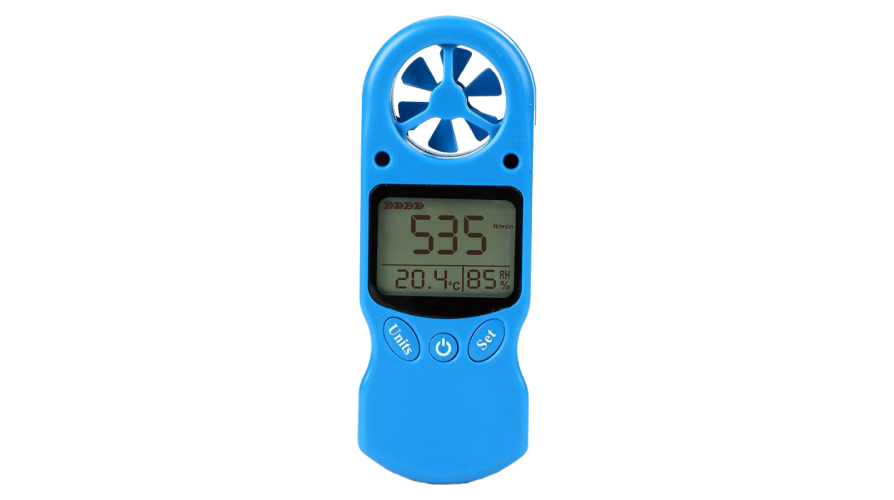How an Anemometer Can Enhance Your Weather Monitoring System
How an Anemometer Can Enhance Your Weather Monitoring System
Blog Article
All You Need to Know Regarding Anemometers: How They Function, Why They Matter, and Where to Make use of Them
Anemometers, though typically forgotten in the realm of scientific instruments, play a vital duty in various fields, supplying useful understandings right into wind rate and airflow patterns. As we dig right into the details of anemometer technology, we will uncover the inner workings of these gadgets, their relevance, and the vital considerations when choosing the appropriate anemometer for particular applications.

Anemometer Essentials
A vital tool utilized to gauge wind rate and instructions, the anemometer plays a vital role in weather forecasting and various markets. An anemometer generally is composed of three or four mugs that turn in the wind, a vane that aims into the wind, and sensing units to track the motions or rotations.
There are numerous kinds of anemometers available, including mug anemometers, vane anemometers, hot-wire anemometers, and sonic anemometers, each with its one-of-a-kind features and applications. Cup anemometers are frequently made use of for standard wind speed measurements, while vane anemometers are favored for directional dimensions.
Concepts of Anemometer Procedure
Structure on the foundational understanding of anemometer fundamentals, the concepts of anemometer procedure elucidate the technicians behind wind speed and direction measurements. Cup anemometers, for circumstances, have 3 or more mugs that record the wind, causing them to rotate faster as the wind rate boosts. Hot-wire anemometers count on a warmed cord that cools down as wind passes over it, with the price of cooling down determining the wind speed.
Importance of Anemometers
Anemometers play an essential role in gauging wind rate and direction, offering vital data for weather projecting, climate studies, environmental surveillance, and air travel operations. Meteorologists depend on anemometers to collect exact wind information, helping them comprehend weather patterns, predict tornados, and problem timely cautions to the public. Wind ranch operators make use of anemometers to analyze wind problems and maximize electricity production from wind turbines.
Applications Across Numerous Industries
In the sustainable energy field, anemometers play a critical function in evaluating wind problems for wind ranch positionings, ensuring optimal power production. Industries like building and construction and mining use anemometers to keep track of wind rates, important for safety and security protocols, particularly when working at elevations or in open-pit mines where solid winds can pose dangers. In agriculture, anemometers aid farmers in managing crop spraying by giving real-time data on wind speed to stay clear of drift.

Selecting the Right Anemometer for Your Demands
For basic purposes, a mug anemometer is ideal for gauging wind speed, while a vane anemometer see here now supplies wind instructions data. Hot-wire anemometers are ideal for reduced airspeed measurements, and ultrasonic anemometers offer high accuracy and toughness.

Conclusion
In final thought, anemometers play an essential role in determining wind rate and direction throughout numerous industries. It is crucial to consider the value of anemometers in order to make enlightened decisions when picking the most ideal device for determining see this page wind conditions.
There are different types of anemometers available, consisting of cup anemometers, vane anemometers, hot-wire anemometers, and sonic anemometers, each with its unique features and applications. Mug anemometers are frequently used for basic wind speed measurements, while vane anemometers are favored for directional dimensions. Hot-wire anemometers are suitable for low airspeeds, and sonic anemometers are perfect for high-precision dimensions in study and industrial settings.Building on the foundational understanding of anemometer essentials, the concepts of anemometer operation clarify the auto mechanics behind wind rate and instructions measurements. For basic functions, a cup anemometer is suitable for gauging wind speed, while a vane anemometer supplies wind instructions information.
Report this page